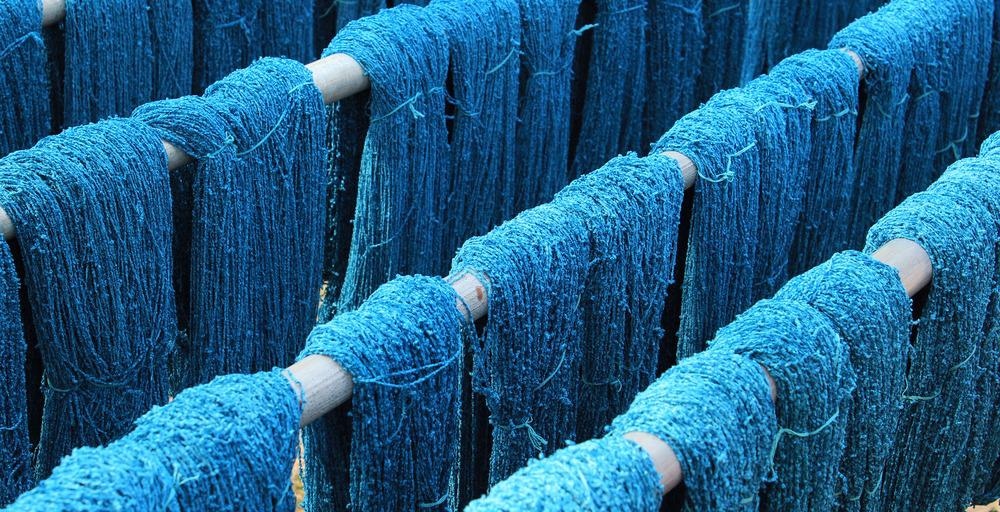
Image Credit: naKornCreate/Shutterstock.com
Carbon capture and utilization is a new concept of capturing atmospheric carbon dioxide and converting it into valuable products. These types of projects offer huge benefits, including reducing carbon emissions, assisting in countries meeting net-zero carbon objectives, and producing products from this recycled carbon that also often provide a solution to another environmental issue.
One such environmental issue that is being addressed by a new carbon capture and utilization project is the detrimental impact of producing and using chemical dyes for textiles. Netherlands-based DyeCoo, a company with more than 15 years of experience in carbon dioxide technology, has launched the world’s first 100% water- and chemical-free textile processing solution.
This article will discuss how DyeCoo developed its revolutionary system and the impact it will have on carbon emissions and the environment.
Carbon Emissions Must be Significantly Reduced
The discussion of the drastic need to reduce carbon emissions has been under the spotlight for many years. As we see the negative impact of climate change more and more, global organizations and governments have been put under increasing pressure to implement strategies that induce real and sustainable change to tackle carbon emissions.
As a result of mounting scientific data demonstrating the detrimental and almost irreversible impact of climate change related to levels of greenhouse gases in the atmosphere, most countries worldwide have set necessary goals for reducing their emissions and eventually reaching net-zero carbon emissions. Carbon capture and utilization strategies have emerged as a real solution to removing carbon from the atmosphere and converting it into useful products.
Current Textile-Dying Processes Damage the Environment
The large-scale production of synthetic dyes has a significant detrimental impact on the environment. It is a major source of pollution that has become a serious public concern. In addition to the production of dyes, the dying process itself is also an environmental concern. It causes chemicals to be discharged into the water system, where it eventually enters the bodies of aquatic life and damages soil where crops are grown.
Synthetic dyes damage the environment and are highly toxic and potentially carcinogenic. The production of dyes also uses vast amounts of water in a process that is not sustainable. Therefore, there is a great demand for sustainable and safe textile dyes.
DyeCoo Water Free Dyeing
Video Credit: DyeCoo Textile Systems/YouTube.com
How DyeCoo is Using Captured Carbon to Sustainably Dye Textiles
DyeCoo is addressing the need to reduce carbon emissions and produce alternative, safe, sustainable dyes with one solution. The method has multiple benefits. First, it does not use water as its patented technology is based on carbon dioxide. The system used captured carbon dioxide as a dyeing medium within a closed-loop process.
Pressurized carbon dioxide becomes supercritical, giving it a high solvent power and facilitating the dissolving of the dye. The dye is then transported deeper into the fiber thanks to the high permeability, resulting in vibrant colors.
Importantly, the carbon dioxide dyeing process does not require chemicals to dissolve the dyes due to the high solvent power of the supercritical carbon dioxide. DyeCoo’s process uses 100% pure dyes which tests have proven to have a greater than 98% uptake.
The process is also proven to be scalable, with DyeCoo producing the same results on an industrial scale. This demonstrates that DyeCoo’s method could realistically be adopted by companies worldwide to significantly reduce the use of harsh chemicals while creating a demand for reclaimed carbon dioxide.
DyeCoo’s technology has already been endorsed industrially and commercially and is the only company to have proven its carbon dioxide-based textile processing technology can be successfully scaled up.
The carbon dioxide-based process is incredibly energy efficient. As no water is used in the process, DyeCoo’s technology cuts out the energy requirements of evaporating water. The process also benefits from efficient color absorption and short batch cycles, making it even more energy efficient.
For companies, the innovative process offers more benefits. With efficient color absorption, short batch cycles, and no wastewater, DyeCoo’s technique can significantly reduce operating costs in comparison with conventional methods. It can also produce vibrant colors, which is not possible with conventional technologies. With a 98% absorption rate, minimal dye is wasted, with most completely infiltrating the textile. This offers textile makers the opportunity to create items that were previously difficult or impossible to achieve.
As DyeCoo’s process does not require water, textile-producing factories can be established with geographical freedom. Manufacturing sites no longer need to be sited near clean water sources, which opens up new opportunities for the industry. The result of geographical freedom may be shorter lead times and economic stimulation in new areas.
References and Further Reading
C02 dyeing. DyeCoo. Available at: http://www.dyecoo.com/co2-dyeing/
Gabrielli, P., Gazzani, M. and Mazzotti, M., 2020. The Role of Carbon Capture and Utilization, Carbon Capture and Storage, and Biomass to Enable a Net-Zero-CO2 Emissions Chemical Industry. Industrial & Engineering Chemistry Research, 59(15), pp.7033-7045. https://pubs.acs.org/doi/10.1021/acs.iecr.9b06579
Koytsoumpa, E., Bergins, C. and Kakaras, E., 2018. The CO 2 economy: Review of CO 2 capture and reuse technologies. The Journal of Supercritical Fluids, 132, pp.3-16. https://www.sciencedirect.com/science/article/abs/pii/S0896844617300694
Pulling CO2 out of the air and using it could be a trillion-dollar business. David Roberts. Vox. Available at: https://www.vox.com/energy-and-environment/2019/9/4/20829431/climate-change-carbon-capture-utilization-sequestration-ccu-ccs
Disclaimer: The views expressed here are those of the author expressed in their private capacity and do not necessarily represent the views of AZoM.com Limited T/A AZoNetwork the owner and operator of this website. This disclaimer forms part of the Terms and conditions of use of this website.